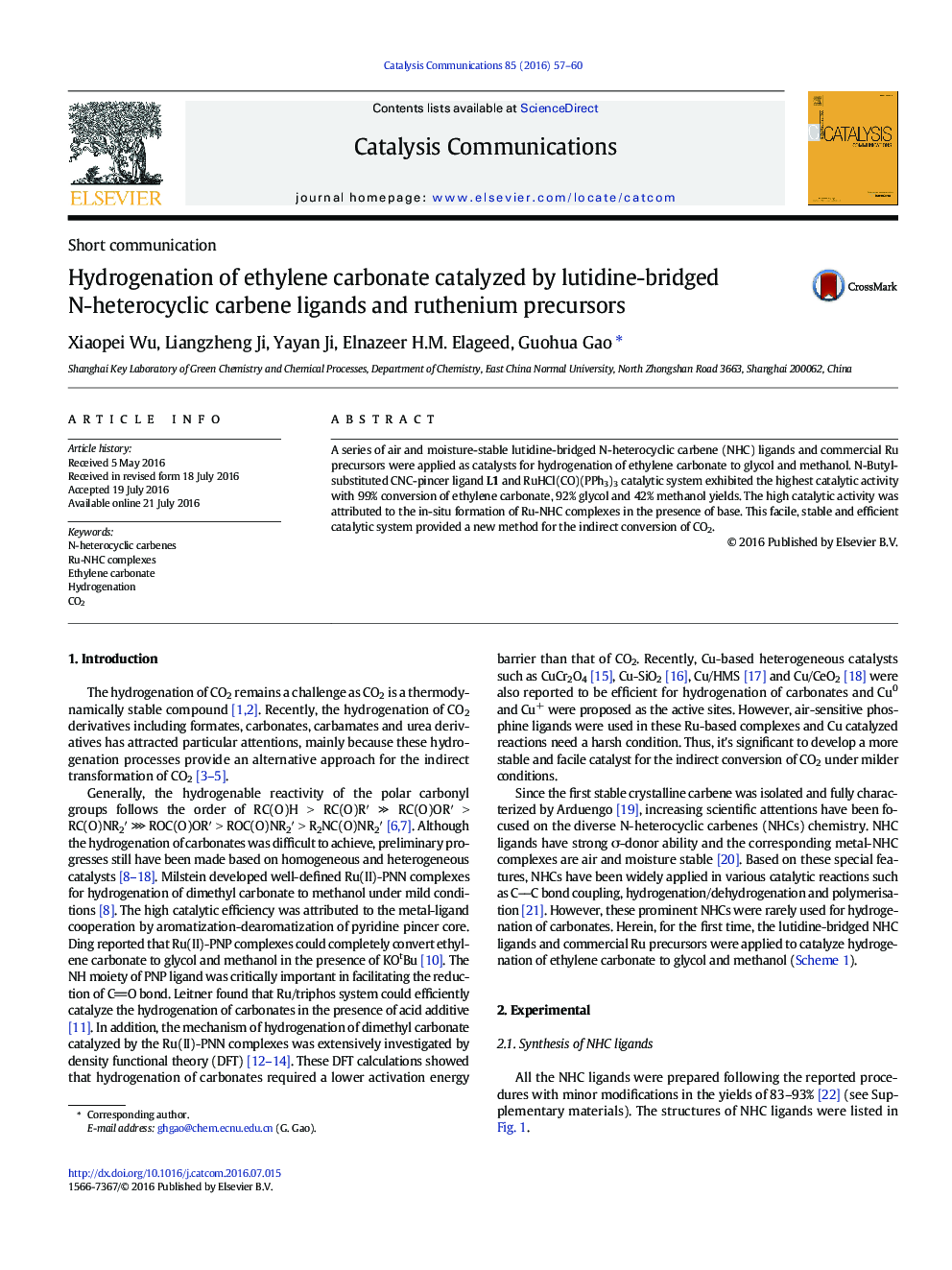| Article ID | Journal | Published Year | Pages | File Type |
|---|---|---|---|---|
| 49241 | Catalysis Communications | 2016 | 4 Pages |
•NHC ligands and Ru precursors were effective in hydrogenation of ethylene carbonate.•The high activity was ascribed to the in situ formation of Ru-NHC complexes.•The facile catalytic system provided a new method for the indirect conversion of CO2.
A series of air and moisture-stable lutidine-bridged N-heterocyclic carbene (NHC) ligands and commercial Ru precursors were applied as catalysts for hydrogenation of ethylene carbonate to glycol and methanol. N-Butyl-substituted CNC-pincer ligand L1 and RuHCl(CO)(PPh3)3 catalytic system exhibited the highest catalytic activity with 99% conversion of ethylene carbonate, 92% glycol and 42% methanol yields. The high catalytic activity was attributed to the in-situ formation of Ru-NHC complexes in the presence of base. This facile, stable and efficient catalytic system provided a new method for the indirect conversion of CO2.
Graphical abstractFigure optionsDownload full-size imageDownload as PowerPoint slide
